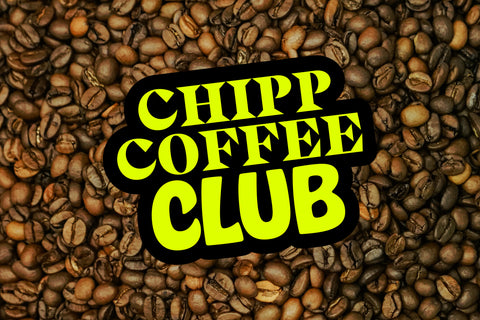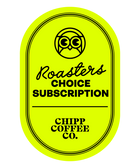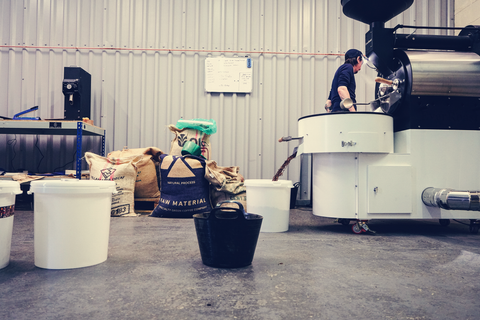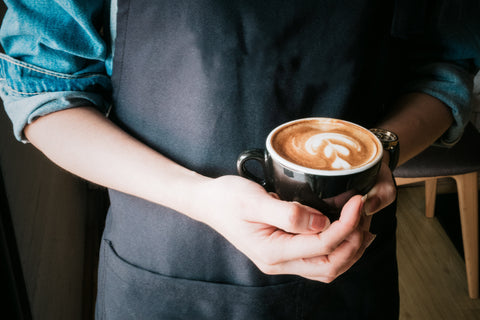

There is such a wide range of different kinds of coffee, from beans to roasting methods and preparations, that it can make your head spin trying to decide which one is right for you. It can be easy to get overwhelmed without knowing what you're doing or what the words mean. However, it can be easy to understand the different types of coffee by breaking them down into beans, roast, and kinds of coffee drinks.
The Different Types of Coffee Beans
Arabica
Easily the most popular kind of coffee bean, this bean is responsible for over 60% of the coffee beans in the world. They're grown at high altitudes with lots of rain and shade. As a result, these beans are characterised by full flavour, aroma and sweetness.
Robusta
This is the second most produced kind of bean, behind arabica. The two are so popular that many think these are the only two bean variations. Grown at lower altitudes, it's a hardier bean that needs less rainfall. They also have double the caffeine than arabica, finishing with a smooth texture that tempers a harsh flavour. Some even think there's a chocolatey after-taste to them.
Liberica
This bean is much harder to find than the first two. They are larger, with an irregular shape, but have a distinct aroma. For some, there’s a smoky taste, although others say they’re floral and fruity.
Excelsa
This is a newer kind of bean that was recently classified as Liberica but has a very distinct taste from the Liberica bean. This large difference in taste has won Excelsa its own category, with tart and fruity characteristics usually suited to a light roast but also with the rich profile of a dark roast. Therefore this paradox has made it a popular bean for coffee enthusiasts.
The Different Types of Coffee: Light or Dark Roast - What’s the Difference?
As coffee companies explore the different versions of coffee to best find the ones that each individual customer will love to sip on, they’ve begun to play with how they roast the coffee beans, tweaking time and temperature to change the effect that roasting has on the taste of the coffee brewed with the beans.
Coffee beans don’t come straight off the tree into bags and then to your table. Instead, after being harvested, the beans are processed at the origin and then shipped and roasted according to the kind of bean it is (some tolerate heat better than others) and the kind of coffee desired from the bean.
Count the Cracks
During the roasting process, the beans will make a popping or cracking sound. The first of these is referred to as the first crack and the second as the second crack. These cracks help roasting professionals determine whether a bean is lightly roasted or darkly roasted.
Light Roast
Lightly roasted beans are roasted at a lower temperature for a shorter time than dark roasts. The roasters aim for a temperature between 196 and 210 degrees Celsius. 196 degrees Celsius is where the first crack sounds, signalling that the beans have reached a light roast. The beans are usually a light brown colour without much oil on them.
Light roast coffees retain their moisture because they haven't been roasted as hot or long, and they make denser coffee. Because the roasting isn’t intense enough to burn off tastes, these beans usually retain a lot of the origin country's unique flavour profiles. Many people use words like crisp, acidic, floral, or fruity for light roasts.
Dark Roast
Darkly roasted beans are left on the roasting machine for longer and hotter, at temperatures higher than 220 degrees celsius but not much hotter than 240 degrees. This usually happens at the end of the second crack. The beans are usually dark brown, almost black, with a glossy oil.
Roasting for this long and hot coffee makes for a less dense coffee because the moisture is roasted. Dark roasts often have a bold and smoky taste, taking on more tastes from roasting without retaining as much from the bean’s origin country. Dark roasts are often described as bold, smoky, chocolatey, nutty or robust.
The Difference
Dark roasted coffees usually have simpler flavours that are extremely deep, giving them robustness with a few simple flavours. For a more complex taste, light roasts have delicate tastes that are nonetheless more complex than a darker roast.
When it comes to the kind of coffee you’re making, light roasts are usually recommended for pour-over and drip coffees, whereas dark roasts are preferred for espresso drinks or those that use milk or cream.
Is Espresso the Same as Coffee?
Espresso and coffee are two terms that are used interchangeably, but when it comes to technicalities, it can get complicated. Espresso is a coffee, but it's brewed very differently from how other coffees are brewed, giving it a different flavour profile and consistency.
Regular coffee is usually brewed through the use of gravity and a filter. Water is dripped through the coffee grounds, or the grounds are soaked in water. This process takes anywhere from 1-12 minutes, depending on how much coffee you’re making. The grounds-to-water ratio is about 1:18, meaning there’s far more water than grounds. The coffee beans themselves are ground into a semi-coarse consistency.
Espresso is a much more intense process, from the pressure to the fine grind. Espresso machines create espresso with high-pressure water that quickly extracts the most intense flavours for a shot of espresso. The result is thicker, often with a dense foam called a crema on top. This drink is more intense thanks in part to the different grounds-to-water ratio, which is 2:1.
An important and cool thing to know about espresso is that you can make it with any coffee bean. The most essential thing to note is that it needs to be a finely ground bean. Many people prefer a darker roast because of its stronger flavour, and you can even find coffee labelled as espresso because its darker roast is so good for espresso.
The Different Types of Hot Coffee Drinks
Black (or filter)
This is the simple and classic ground coffee where the beans are steeped in hot water and served warm (or piping hot!)
Latte
Lattes are a shot of espresso topped with steamed milk and a touch of foam.
Flat White
A flat white is essentially a small latte, a strong espresso shot with steamed milk and a touch of foam.
Cappuccino
A cappuccino is the same concept as a latte, with a little twist. The cappuccino has a shot of espresso and then more foam than milk. A dry cappuccino is much more foam than milk, and a wet cappuccino is much more milk than foam (although it still has the foam).
Americano
An americano closely resembles a black coffee by diluting an espresso shot with hot water.
Espresso
Espresso can be served as a shot on its own, sometimes even in a miniature latte cup.
The Different Types of Cold Coffee Drinks
Iced Coffee and Iced Espresso
These two kinds of iced drinks are made by pouring hot-brewed coffee or espresso (sometimes chilled before being added) over ice. Depending on your preferences, this often has milk or cream added to it.
Cold Brew
Cold brew coffee is brewed by immersing coffee grounds in cold water for 18-24 hours, giving a sweet coffee with low acidity.
Frappuccino
Frappuccinos are blended iced drinks with the consistency of a smoothie. However, not all are made with coffee and can come topped with whipped cream and syrup.
Nitro
Nitro drinks combine a cold brew coffee with nitrogen bubbles to add a frothy, almost Guinness-like foam to a cold brew.
Pick Your Favorite from all the Different Types of Coffee
Understanding the different kinds of coffee available to you makes it much more accessible and less scary. With a huge variety of roasts and coffee types, everyone can find the perfect coffee type for them. Check out our site here for more info on finding the perfect coffee.









